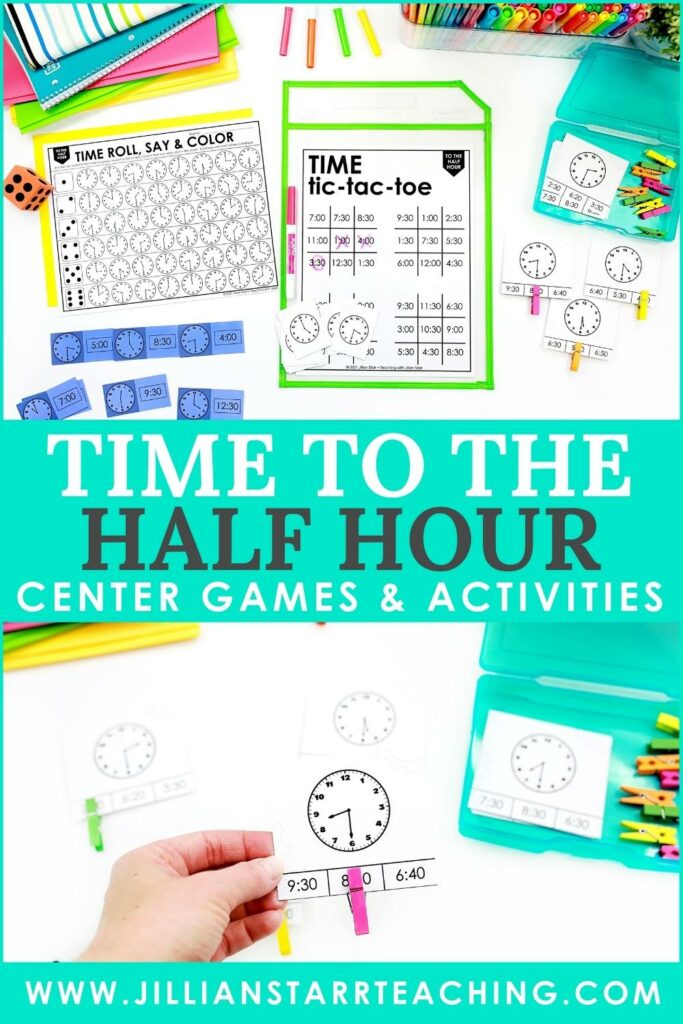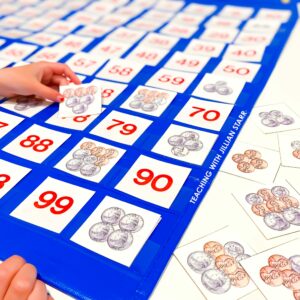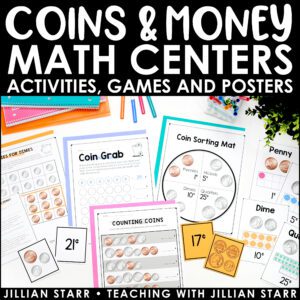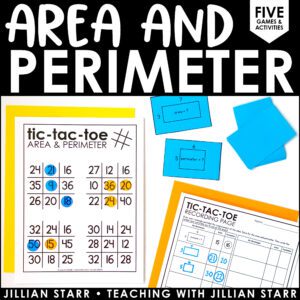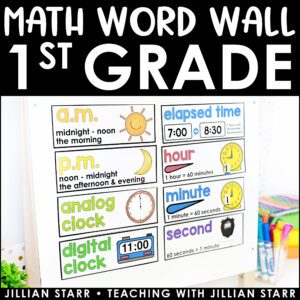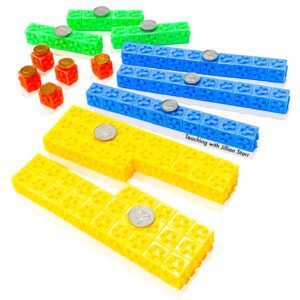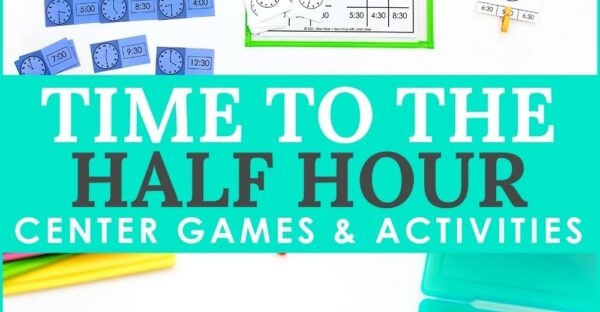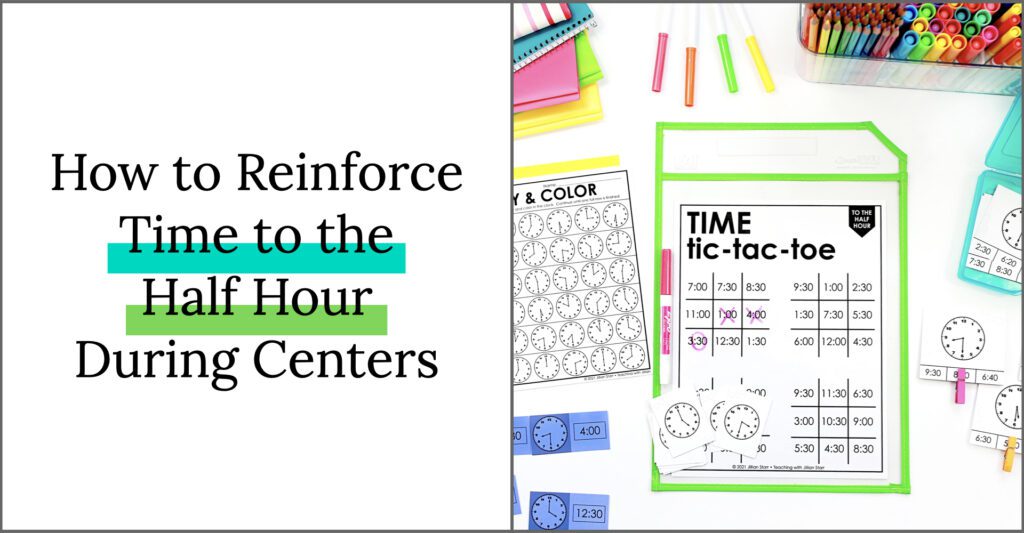
Eureka! Your students are feeling confident with their ability to tell time to the hour. What’s next? Telling Time to the half hour!
Let’s take a moment to think about what that means. Yes, your students know that the small hand signifies the hour. The long hand represents minutes. They are familiar with the 12 numbers that go around the clock. But time and time again, I’ve mistaken how tricky it is for students to grasp telling time to the half hour. It is not the conceptual idea of 30 minutes. The visual (that sneaky small hand) throws them for a loop. Why? Well, that small hand points between two numbers. Which hour is it, Ms. Starr?!
One of the most important tools I have added to my time toolbox has been individual clocks with gears. This has been such a game-changer for my students to see the passing of time. With these clocks, students can watch the minute hand move around the clock and how the hour hand follows along slowly. It is HERE where we can see where the hour hand is placed in relation to different minute intervals (e.g. directly between two numbers at the half hour).

Once again, direct instruction and visual repetition are the focus of my time-telling units. That’s why I’ve gathered some of my favorite activities for teaching and practicing telling time to the half hour. Incorporating these activities into your centers will help your students recognize the analog time in no time (sorry, pun intended)!
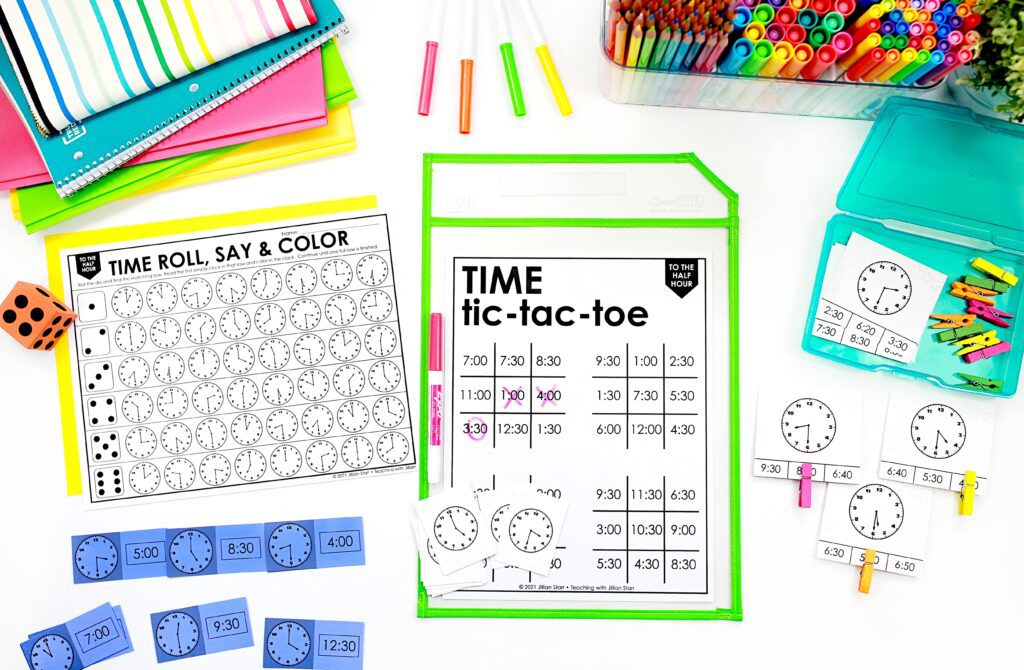
Time to the Half Hour Tic-Tac-Toe
Over the years, I have found that repetitive analysis of clock faces is crucial. I look for simple activities that force students to match clock faces to digital expressions.
Enter: Time to the Half Hour Tic-Tac-Toe.
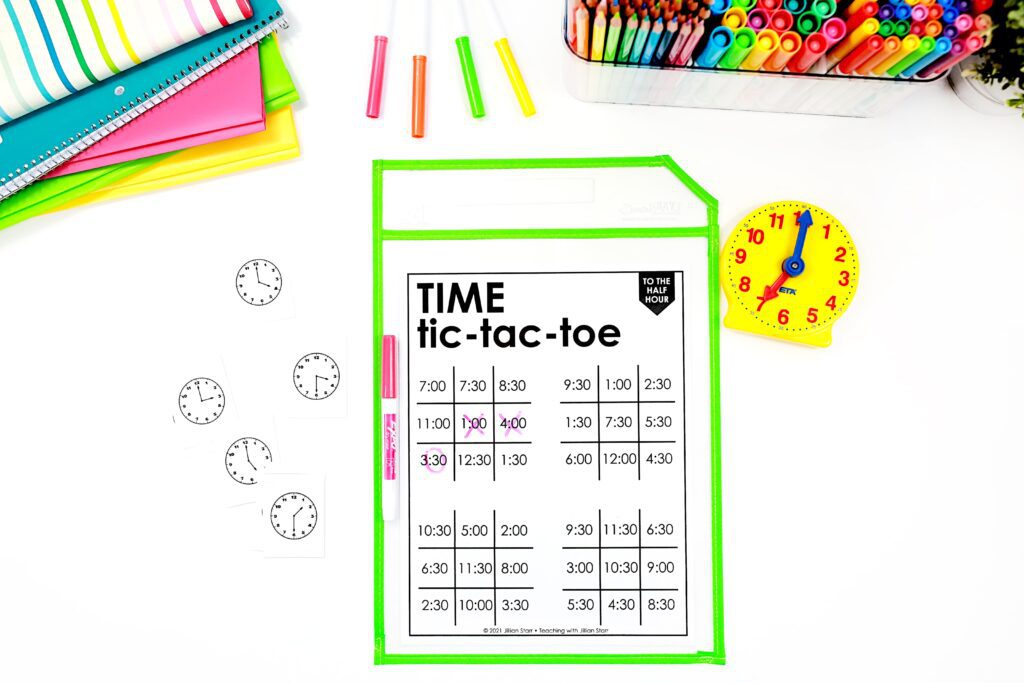
Who doesn’t love a game of tic-tac-toe? But, this isn’t your typical game of Tic-Tac-Toe. It is simple, and fun. It is also great way to reinforce telling time to the half hour, even with a twist.
Setup
Time Tic-Tac-Toe is a partner game. Setup and gameplay are simple. Grab:
- dry erase pockets
- two dry-erase markers
- one game board
- a stack of clock face cards
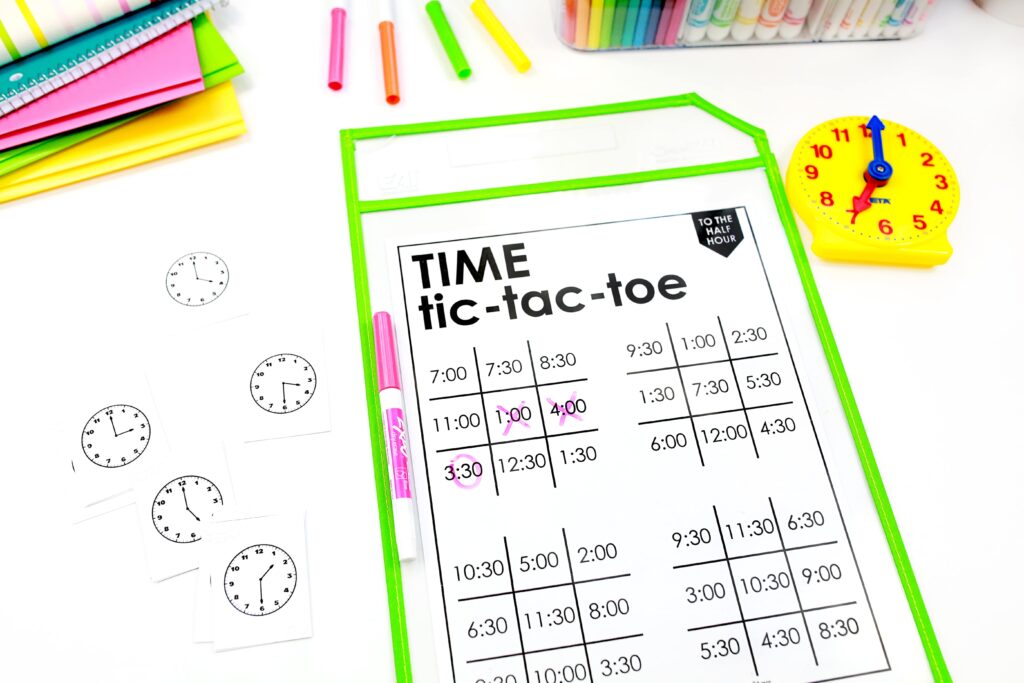
How do you play?
Ready for the twist? Before you begin, you should know that students play all four games simultaneously.
First, Player 1 takes a clock face card from the pile. They can place their marker on any matching digital time from any board. Players 1 and 2 take turns picking cards and placing their markers. If no open spaces match their card, the player loses a turn. When one player gets three-in-a-row on a single board (vertically, horizontally, or diagonally), they win that board. That board is now closed, and students can no longer place a marker on that board.
Once there is a winner for all four boards, players count how many boards they won. The player with the most boards is the overall winner. If each player wins two boards, it is a tie game.
Independent Bonus Idea:
Time it! Tic-tac-toe can get a little stagnant when playing independently. So, one way you can spice things up: grab a timer. Challenge students to record their times and see how quickly they can get three in a row!
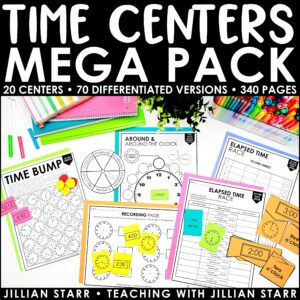
Time Centers Mega Pack
Time to the Half Hour Roll, Say & Color
Did someone say color?!
Yes! There’s your hook! This activity is a massive hit as an independent station in our telling time to the half hour. After you introduce this activity, don’t be surprised if you find your students picking out their favorite six crayon colors.
Time Roll, Say & Color is more than a fun coloring activity. Are you looking for a great introduction to telling time to the half hour? Need an activity that engages students in content review without feeling monotonous. Time Roll, Say & Color is a fantastic way to practice identifying and articulating time aloud. You can assign it as an independent station or a small group activity with teacher support.
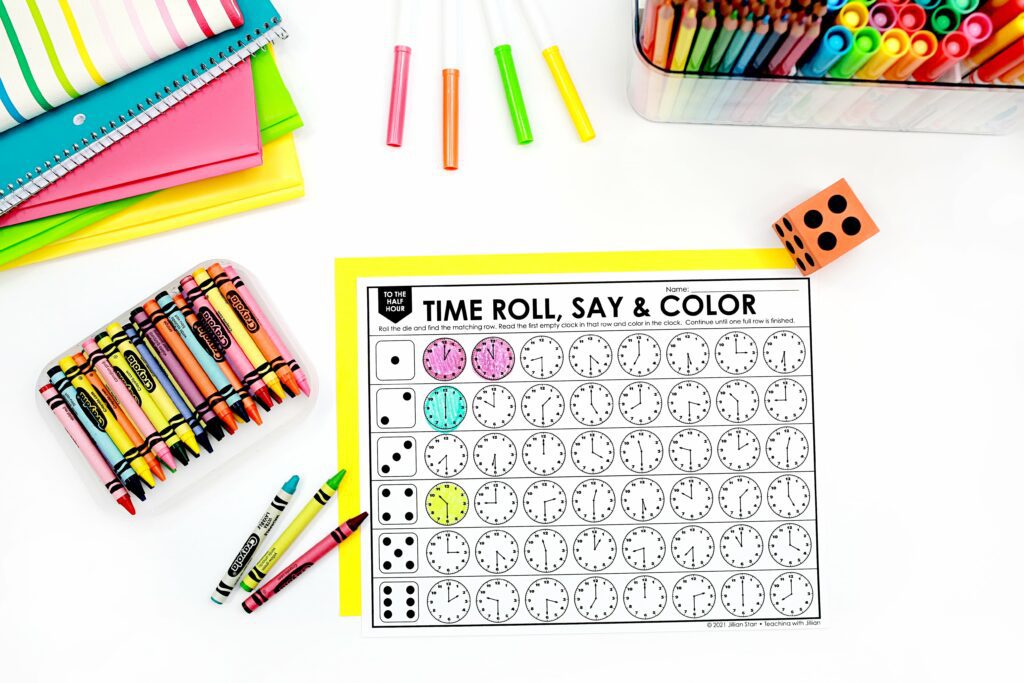

Set-Up
- A box of crayons with a lot of colors – each student will need six.
- Photo copies of Time, Roll, Say & Color
- Dice
How do you play?
Gameplay is simple!
First, roll the dice. Then, find the corresponding roll. Say the time indicated by the first uncolored clock face. After, color in the clock face. Continue until all the clock faces are color!
Clip Cards with Half Hour Clocks
Clip cards with half hours clocks are great for two reasons. First, they are multimodal. Students will use several thinking skills and motor skills to accomplish a simple, repetitive task. Clip cards are a great way to incorporate fine motor into your time to the half hour centers. Your students who struggle with written output will benefit from zero written steps. Second, clip cards are versatile. They can be used independently, in partners, and in small groups with a teacher.
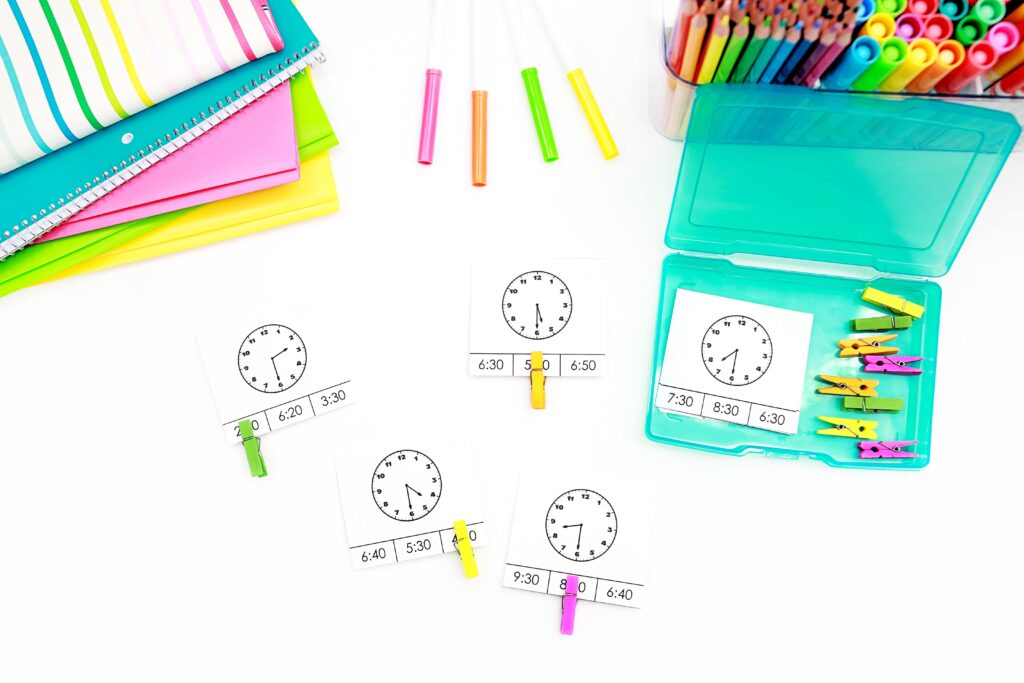

Set-Up
I won’t lie. The setup for this one takes a little time. But, once you prep this activity, you can easily store it. That means it is a one-time prep!
Here’s what you’ll need:
- Individual cards (cut out in advance). Give one set to each student or partnership
- A set of clothes pins
Save your future self lots of time! Once you create these sets, keep them! You will want to reuse them year after year. I have found that plastic photo boxes are the best way to store any card set like these.
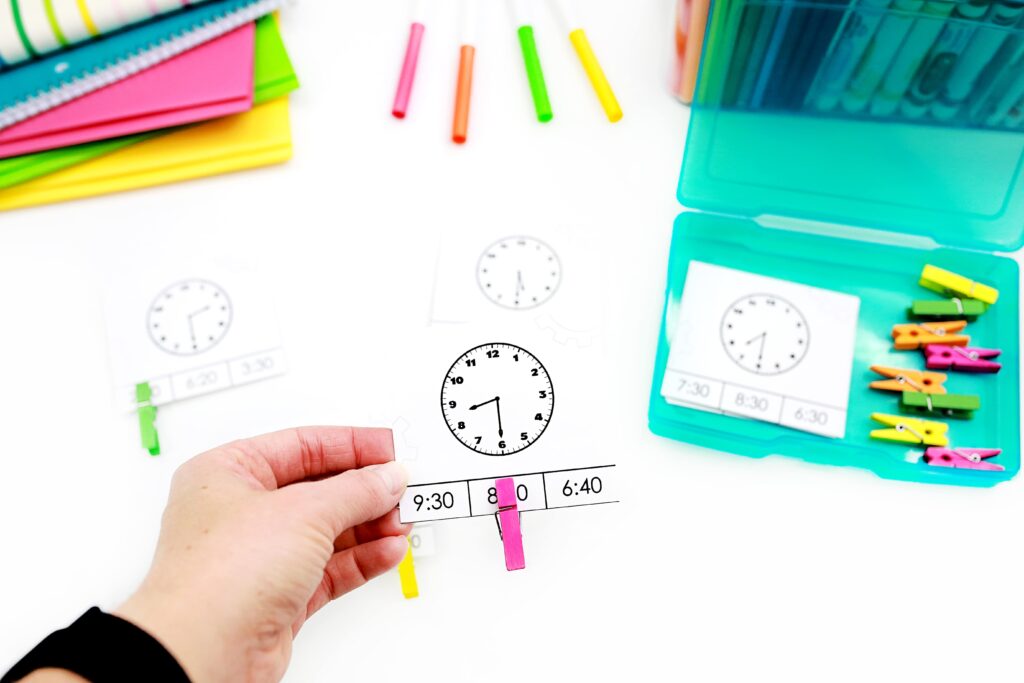

Instructions
- Students look at the clock face represented in the image and the matching digital times below (there are three options)
- Students clip the mini clothes pin to the correct digital time.
- Fast finishers, can repeat the task or they can record their answers in a recording sheet.
Time to the Half Hour Dominoes
If you’re looking for an activity that can be done independently, in partners, in a small group, AND in a whole group setting, look no further! Time to the Half Hour Dominoes is such a wonderfully versatile game that adding it to your math workshop is a no-brainer! They’re also so easy to prep that sometimes I have my students cut them out themselves and keep a pack in their math folder!


Time to the Half Hour Kaboom!
You’ve heard me say it before: Kaboom is the absolute best center game. So, of course, I had to make a version for telling time to the half hour!
For those of you who haven’t heard my schpeal about Kaboom! Here are the top three reasons why I love it:
- It is engaging.
- The game never ends.
- It requires very little prep.
Why do I love it?
Time to the Half Hour Kaboom is particularly effective. It keeps kids engaged for the entire length of a center. And most importantly, it incorporates something few other activities for telling time incorporate: writing.
Learning and practicing how to write time is crucial. I often reserve writing activities for journal entries. However, in “time to the half hour” Kaboom!, students need to record time by writing the digital (numerical) answer.
Additionally, Time to the Half Hour Kaboom is collaborative! Yes, the game includes some winning and losing. However, students challenge each other in each turn, incentivized to make sure opponents identify the clock faces correctly.
Setup
- Make 30+ resuable time to the half hour Kaboom! sticks. I like to glue Kaboom! cards to wide, flat popsicle sticks.
- Print Kaboom! playing boards. Yes, these can be reused as well!
- Print Kaboom! recording sheets
How do you play?
Kaboom! can be played independently or with partners. It is most fun when there is a small group!
First, put all of the popsicle sticks in a cup face down. That way, students can’t see the clock face cards. Here’s how to play:
- Student 1 pulls out a popsicle stick.
- The student identifies the “answer” or “correct response.” If their
answer is correct (determined by either a reference sheet or their peers)
they get to keep the popsicle stick. If they answer it incorrectly, the stick
must go back in the cup. - Students continue around the circle, selecting one popsicle stick
at a time and answering their question. - Any student who pulls a KABOOM! stick has to place all of
the popsicle sticks they have accumulated back into the cup,
leaving them with zero. (It may sound harsh, but it happens
OFTEN, so all students will at some point get “Kaboomed!”).
In the end, students record their popsicle stick winnings on the recording sheet. Bonus: Peers check over each other’s work!



Time Centers Mega Pack
Telling time to the half hour can be tricky. My final piece of advice for supporting your students: engaging repetition will have your students feeling confident and ready to move to the next step. Let me know which activities keep your students engaged and excited!
If some of your students are still working on telling time to the hour, be sure to check out my favorite activities for telling time to the hour HERE!
